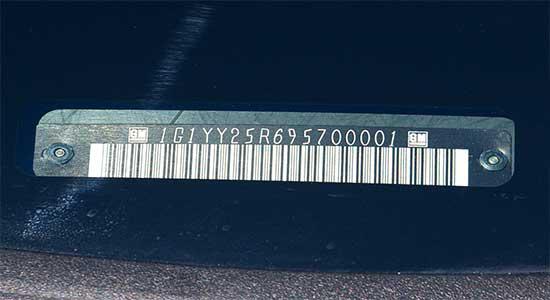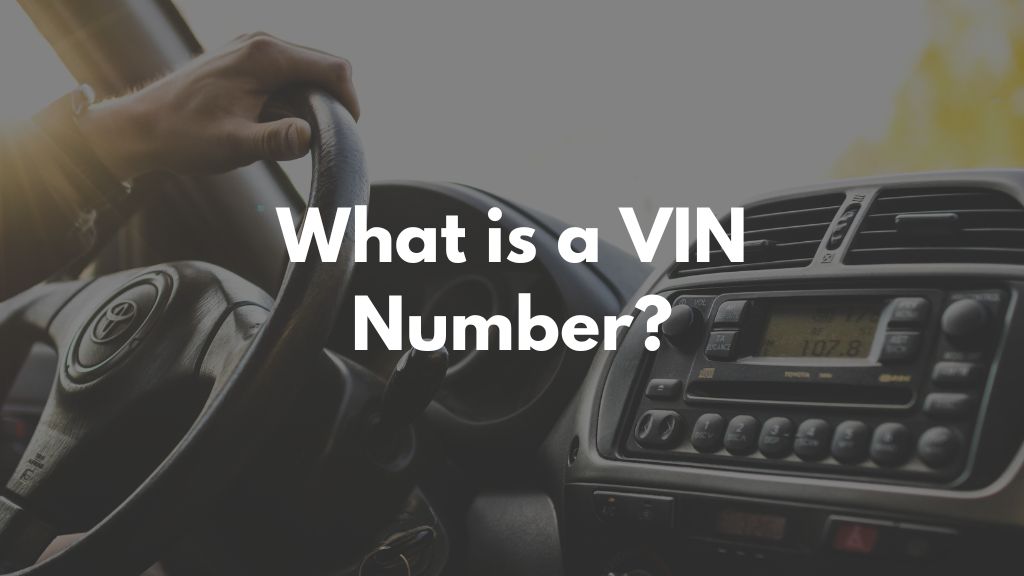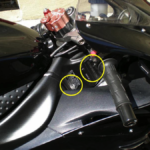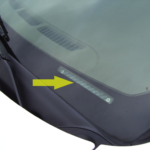Last Updated on August 4, 2022 by Calvyn Ee
All vehicles sold in the United States of America must have an identification code known as a VIN. Short for Vehicle Identification Number, a VIN is basically a unique code consisting of 17 characters, which can be a mixture of numbers and letters. A VIN is assigned to each individual vehicle produced by any automobile manufacturer.
Manufacturers have used VINs since 1954, although no standard format was ever adopted at the time. VINs would be found in several varieties based on who manufactured that vehicle. This changed in 1981 when the National Highway Traffic Safety Administration (NHTSA) mandated the standard 17-character VIN sequence that is used today.
Where is the Vehicle Identification Number?
The VIN can be found in several areas throughout the vehicle. Some of the probable locations include:
- The lower left corner of the dashboard, just in front of the steering wheel. This is a common area where the VIN is found.
- The front area of the engine block. Simply open the hood, and you will see it etched in front of the engine.
- Directly above the rear wheel.
- Within the driver-side doorjamb, usually underneath the side view mirror.
- At the driver-side doorpost, parallel to where the door latches.
- Underneath the spare tire.
VINs are also found in legal documents, such as the insurance card or policy, on the vehicle title and registration card/certificate, and body shop records, just to name a few. You can find detailed guides on locating your VIN based on your vehicle type here.
What Makes a VIN Unique?

The 17 characters of a VIN are not simply strung together from a random selection of numbers and letters. The standardized format it abides by includes various information that can identify various characteristics of the car in question.
We’ll briefly cover the structure of a VIN number.
- The first three characters represent the world manufacturer identifier (WMI) code. It contains information on the car’s country of origin, as well as its manufacturer.
- The fourth through ninth characters are the vehicle descriptor. They provide information on the car’s model, the engine type, and more. The ninth character is used as a check digit to screen invalid VIN numbers.
- The tenth through seventeenth characters is the vehicle identifier section. The tenth character is used as the model year identifier, while the eleventh character denotes which manufacturing plant the car was built. The remaining characters indicate the vehicle’s serial or production number.
How is a Vehicle Identification Number Useful?
Simply put, a VIN operates similarly to your Social Security Number. It represents a unique set of characters that point to your vehicle, including all attributes of its performance and usage history. As such, no two VIN numbers are alike.
Here are some benefits of having a VIN:
- Check a vehicle’s history report before making a purchase.
- Allows law enforcement agencies to locate a stolen vehicle or parts.
- Ensure that the Department of Motor Vehicles can track ownership of the car.
- Make sure you are getting the right vehicle parts and services.
- Be aware of any manufacturer’s recall for that particular model.
- Prevent car insurance fraud.
Why is the VIN Number Important?
Knowing your VIN number gives you significant protection when purchasing a used car. You’ll be able to spot potential red flags in a deal and save you a lot of legal and/or financial trouble. Feel free to use our VIN decoder to learn more about the car you’re interested in or even to find out any detail about your current vehicle.




